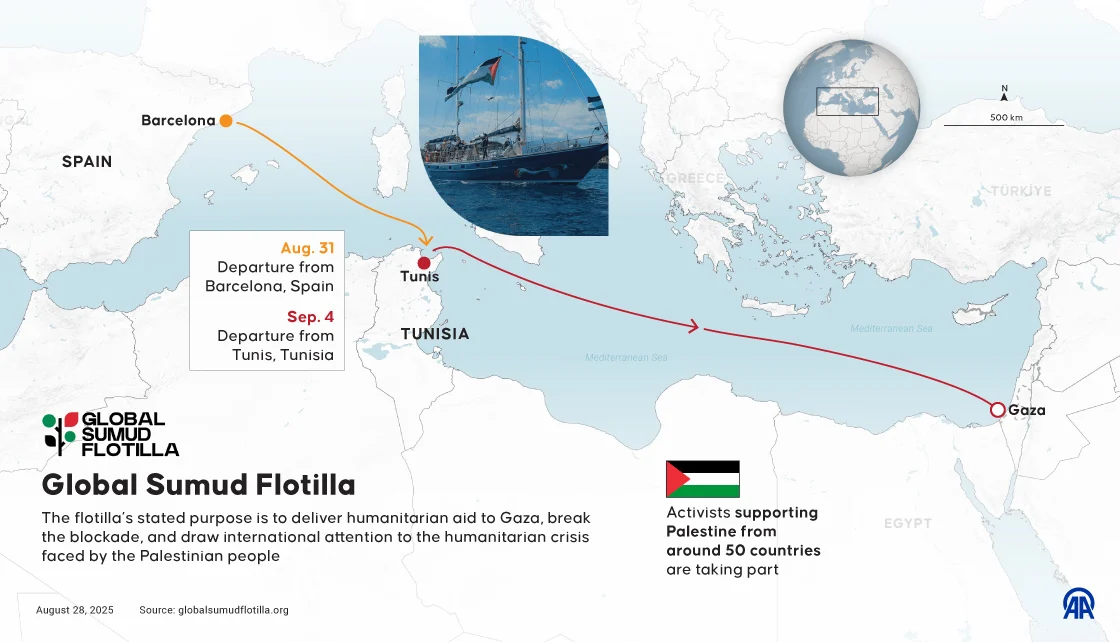The Late Ottoman Period (1517-1914)

The Late Ottoman Period in Palestine (1517-1917): A Comprehensive Historical Account
Chapter 1: The Ottoman Conquest and Early Administrative Framework (1517-1600)
The Transition from Mamluk to Ottoman Rule
In 1516-1517, Sultan Selim I’s Ottoman forces conquered Palestine following their decisive victory over the Mamluks at the Battle of Marj Dabiq. Al Jazeera reports that “The Ottoman conquest of Palestine was relatively swift, with small battles fought against the Mamluks in the Jordan Valley and at Khan Yunis en route to the Mamluk capital in Egypt”. The Ottomans encountered minor uprisings in Gaza, Ramla, and Safad, which were quickly suppressed.
Salim Tamari’s research reveals that the Ottomans strategically “inherited the administrative frameworks of the Mamluk system, retaining existing urban elites and integrating local Arab notables into their bureaucratic hierarchy”. This pragmatic approach ensured continuity while establishing Ottoman legitimacy among Palestinian communities.
Administrative Structure and Governance
The Ottoman Empire organized Palestine within the Damascus Eyalet (province), dividing the region into five sanjaks (provincial districts): Safad, Nablus, Jerusalem, Lajjun, and Gaza. Each sanjak was further subdivided into subdistricts called nawahi. Nur Masalha documents that “Palestine was divided into the districts of Nablus and Acre, both of which were linked with the province of Beirut and the autonomous district of Jerusalem, which dealt directly with Istanbul”.
The population of Palestine under early Ottoman rule was estimated at around 200,000, with most inhabitants living in villages. The largest cities were Gaza, Safad, and Jerusalem, each with populations of around 5,000-6,000.
Land Tenure and Property Systems
Ottoman property administration consisted of a sophisticated system combining fiefs called timar and religious trusts called waqf. Salim Tamari explains that “Timar lands were distributed by the sultan to various officers and officials, particularly from the elite sipahi units. A timar was a source of income for its holder, who was responsible for maintaining order and enforcing the law”.
Significantly, over 60% of cultivated land in the Jerusalem Sanjak was waqf land, owned by various individuals with revenues dedicated to religious functions, social welfare, and individual beneficiaries. This system provided substantial autonomy to Palestinian communities while maintaining Ottoman oversight.
Cultural and Religious Continuity
Middle East Monitor documents that despite administrative changes, Palestinian identity remained strong during this period. The name “Palestine” continued to be used semi-officially, with many examples surviving from the 16th, 17th, and 18th centuries. The 16th-century Jerusalem-based Islamic jurist Sayf al-Islam Abu’l Sa’ud Effendi defined Palestine as an alternative name for Arazi-i Muqaddas (Ottoman Turkish for “the Holy Land”).
Chapter 2: The Era of Local Dynasties – Ridwan, Farrukh, and Turabay Families (1590s-1700)
The Rise of Palestinian Governing Dynasties
By the end of the 16th century, direct Ottoman rule over the Damascus Eyalet weakened, partly due to the Jelali revolts and other Anatolian insurrections. This created opportunities for local Palestinian families to assume greater control over their territories.
Al Jazeera documents that “a new governing elite emerged in Palestine consisting of the Ridwan, Farrukh and Turabay dynasties whose members provided the district governors of the Gaza, Nablus, Jerusalem and Lajjun sanjaks between the late 16th century and the late 17th century”.
Political Organization and Alliances
These Palestinian dynasties established sophisticated political networks through strategic marriages and business cooperation. Salim Tamari’s research shows that “ties between the families were solidified through inter-marriage, business and political cooperation”. The prestigious post of amir al-hajj (commander of the Hajj caravan) often went to district governors from Nablus or Gaza, creating durable military alliances between the three families.
Walid Khalidi’s documentation reveals that Palestinian society during this period maintained extensive autonomy. “Gradually, the ties between the Ridwan, Farrukh and Turabay families led to the establishment of a single extended dynasty that held sway over much of Palestine”.
Economic Development and Trade Networks
Salim Tamari documents that Palestinian families during this period controlled significant economic networks. Gaza served as a crucial trading center, with the Ridwan family maintaining control for nearly continuous decades. These dynasties used their wealth from trade and taxation to gain influence in Istanbul, allowing them to maintain local autonomy and even extend control beyond Palestine.
Chapter 3: Cultural Renaissance and Intellectual Life (1600-1750)
Islamic Scholarship and Learning Centers
Nur Masalha extensively documents the rich intellectual tradition of Ottoman Palestine. In “Palestine: A Four Thousand Year History,” he shows that Palestinian scholars made substantial contributions to Islamic learning during this period. Gaza became particularly renowned as a center for Islamic jurisprudence and scholarship, producing notable scholars like Khayr al-Din al-Ramli.
Middle East Monitor reports that “The Ottoman period saw the promotion of Sunni Islam, consistent with the broader imperial policy. Gaza was home to numerous religious institutions, including madrasas and Sufi lodges”. The Great Omari Mosque flourished as a center of religious learning, while numerous smaller institutions supported educational activities throughout Palestine.
The Khalidi Library and Manuscript Culture
Walid Khalidi’s family established one of the most significant libraries in Ottoman Palestine. The Khalidi Library in Jerusalem, established in 1900 through an endowment, housed “probably the largest single collection of medieval Arabic manuscripts in Palestine”. This institution represented centuries of Palestinian scholarly tradition and intellectual accumulation.
Salim Tamari notes that Palestinian intellectual life during the Ottoman period included extensive manuscript copying, legal commentary, and religious scholarship. Palestinian scholars maintained correspondence networks throughout the Ottoman Empire and beyond, contributing to broader Islamic intellectual discourse.
Sufi Orders and Spiritual Life
Palestinian religious life included active Sufi orders that played crucial roles in both spiritual and social organization. Nur Masalha documents that “Palestine became a center for Islamic jurisprudence and scholarship” with Sufi lodges serving as centers for both religious practice and community organization.
These institutions provided education, social services, and cultural continuity, helping maintain Palestinian identity within the broader Ottoman framework.
Chapter 4: Agricultural Development and Rural Society (1700-1800)
Village Life and Agricultural Systems
Salim Tamari’s extensive research on rural Palestinian society reveals sophisticated agricultural and social systems. His work demonstrates that “most Palestinians enjoyed a great degree of self-rule” under Ottoman administration, with taxation “never as heavy nor as efficiently and regularly collected as under the British”.
Palestinian villages maintained complex social hierarchies and economic relationships. Walid Khalidi’s later documentation in “All That Remains” provides detailed information about 531 Palestinian villages, each with sophisticated agricultural systems, social institutions, and cultural practices developed over centuries.
Land Ownership Patterns
Salim Tamari explains that “the surplus extracted from peasants went into the coffers of local leading families, not the Ottoman state”. This system allowed Palestinian notable families to accumulate wealth and maintain local influence while providing services to their communities.
The waqf system continued to play a crucial role in Palestinian rural life, with religious endowments supporting schools, mosques, and social services throughout the countryside.
Economic Networks and Trade
Palestinian agricultural production, particularly olive oil, soap, textiles, and grain, formed the basis of extensive trade networks. Middle East Monitor documents that Palestinian merchants maintained connections throughout the Eastern Mediterranean, contributing to regional economic development.
Salim Tamari notes that Palestinian commercial networks extended from local village markets to international trade routes, demonstrating the sophistication of Palestinian economic organization during this period.
Chapter 5: The Zahir al-Umar Period and Palestinian Autonomy (1737-1775)
The Rise of Zahir al-Umar
Al Jazeera documents that “Ẓāhir al-ʿUmar (c. 1737–75) dominated the political life of northern Palestine for nearly 40 years”. This Palestinian leader established unprecedented autonomy while maintaining nominal Ottoman allegiance.
Zahir’s rule represented the peak of Palestinian self-governance under Ottoman sovereignty. He controlled most of northern Palestine from his capital in Acre, establishing an efficient administration and promoting economic development.
Economic Policies and Development
Under Zahir al-Umar’s rule, Palestinian economic life flourished. Middle East Monitor reports that he “presided over a tightly controlled Palestine, where trade with Europe as well as taxation were growing”. Zahir used wealth from these sources to gain influence in Istanbul while maintaining local autonomy.
His policies encouraged agricultural production, particularly cotton cultivation, which became a major export crop. Palestinian farmers and merchants benefited from stable governance and favorable trade policies.
Cultural and Religious Policies
Zahir al-Umar maintained traditional Palestinian cultural and religious institutions while promoting modernization. Salim Tamari documents that his administration supported Islamic scholarship and maintained the autonomy of religious institutions.
The period saw continued development of Palestinian towns and cities, with Acre becoming a major regional center under Zahir’s patronage.
Chapter 6: Ahmad al-Jazzar and Continued Palestinian Development (1775-1804)
Administrative Consolidation
Following Zahir al-Umar’s death, Ahmad al-Jazzar became Ottoman governor of Acre, extending control over most of Palestine. Al Jazeera reports that “in 1799, with English and Ottoman help, he successfully defended Acre against Napoleon I”.
Al-Jazzar continued many of Zahir’s policies while strengthening Ottoman connections. His administration maintained Palestinian autonomy while ensuring imperial loyalty during the Napoleonic crisis.
Economic Growth and Urban Development
Middle East Monitor documents that al-Jazzar’s period saw continued economic growth and urban development throughout Palestine. Acre remained a major regional center, while other Palestinian cities also benefited from stable governance and favorable economic policies.
Palestinian agricultural production continued to expand, with increased integration into regional and international markets. The soap industry, based on Palestinian olive oil, became particularly important during this period.
Defense Against European Intervention
The successful defense of Acre against Napoleon represented Palestinian and Ottoman cooperation against European colonialism. Al Jazeera notes that this victory “demonstrated the continued strength of Ottoman Palestine and its ability to resist European aggression”.
This period established precedents for Palestinian resistance to European intervention that would become crucial during the 19th-century colonial period.
Chapter 7: The Tanzimat Period and Modernization (1839-1876)
Ottoman Administrative Reforms
The Tanzimat reforms fundamentally altered Ottoman administration throughout the empire, including Palestine. Rashid Khalidi documents that these reforms “prompted major changes, particularly in Jerusalem. Education became secularized, public schools were established, mission schools proliferated, and the press expanded”.
Salim Tamari explains that the Tanzimat created “massive expansion of opportunities gave ample scope to individuals of both non-notable and non-Muslim background to achieve status”. This democratization of Palestinian society had lasting effects on social and political development.
The 1858 Land Code and Its Consequences
Al Jazeera reports that “The 1858 Land Code, intended to clarify land ownership, had the effect of consolidating land in the hands of wealthy urban elites, often at the expense of peasant farmers”. This legal change significantly altered Palestinian rural society and created new forms of social stratification.
However, Salim Tamari notes that Palestinian notable families continued to provide services to their communities, maintaining traditional relationships despite legal changes.
Educational and Cultural Renaissance
Nur Masalha extensively documents the remarkable educational revolution that occurred during this period. “Palestine went through a remarkable printing, literacy and newspaper revolution with new and radical ideas being communicated widely”.
The period saw the establishment of numerous schools, including mission schools and modern Ottoman institutions. Middle East Monitor reports that “Palestinian educational institutions flourished, creating a literate and sophisticated urban population”.
Press and Intellectual Development
When press censorship was relaxed following the Ottoman Young Turk Revolution of 1908, Palestine experienced explosive growth in journalism and intellectual life. Nur Masalha documents that “some thirty-two newspapers appeared in Palestine in the post-1908 period”.
This intellectual renaissance created the foundation for modern Palestinian national consciousness while maintaining connections to broader Ottoman and Islamic intellectual traditions.
Chapter 8: The Jerusalem Mutasarrifate and Administrative Innovation (1872-1914)
Direct Administration from Istanbul
Al Jazeera documents that “By the 1860s, Gaza became part of the Jerusalem Mutasarrifate, which answered directly to Istanbul, bypassing the provincial authority in Damascus”. This administrative change reflected the growing strategic importance the Ottomans placed on Palestine, particularly given increasing European involvement in the region.
The Jerusalem Mutasarrifate represented unprecedented Palestinian administrative autonomy within the Ottoman system, allowing local officials greater flexibility in responding to regional needs and challenges.
European Missionary Activity and Palestinian Responses
Middle East Monitor reports that “European powers, particularly Britain, France, and Germany, began expanding their influence in Ottoman Palestine through consular offices, missionary activity, and archaeological exploration”.
Palestinian communities responded to missionary activity with both adaptation and resistance. Nur Masalha documents that Palestinian intellectual life flourished during this period, with local scholars engaging European ideas while maintaining Islamic and Arabic cultural identity.
Urban Growth and Modernization
Al Jazeera notes that “Despite previous decline, Gaza began to recover demographically and economically in the late Ottoman period. Improvements in transportation, including the construction of roads connecting Gaza to Jaffa and Jerusalem, facilitated trade”.
Population estimates suggest significant urban growth, with Palestinian cities expanding beyond their traditional boundaries. New neighborhoods, markets, and administrative buildings were constructed throughout Palestine.
Chapter 9: Palestinian Identity Formation in the Late Ottoman Period (1876-1908)
Territorial Consciousness and Regional Identity
Nur Masalha provides extensive documentation of Palestinian territorial consciousness during this period. Medieval Palestinian scholars had already demonstrated “a sense of, and pride in, Palestinian regional-territorial identity” within their multiple religious and local identities.
This territorial consciousness encompassed “a distinct Arab region called Filastin, with clear boundaries extending from Rafah in the south to al-Lajjun in the north, as documented in Islamic Sharia Court records of Jerusalem in the 18th-19th centuries”.
Notable Palestinian Families and Cultural Leadership
Walid Khalidi’s research documents the crucial role of Palestinian notable families in maintaining cultural and political leadership during this period. Families like the al-Khalidis, al-Husaynis, and al-Nashashibis provided continuity between Ottoman and emerging national identities.
Rashid Khalidi shows how Palestinian elites navigated “competing loyalties during this transitional period, including Ottomanism, Islamic solidarity, Arabism, Palestinian patriotism, opposition to Zionism, political party affiliations, and other primordial attachments”.
The 1911 Haram al-Sharif Incident
Salim Tamari identifies the 1911 Haram al-Sharif protests as “the turning point in the emergence of a Jerusalem-based Palestinian identity rooted in a rupture between the interests of Jerusalem notables and those of the Sublime Porte”.
Louis Fishman’s research, cited by Salim Tamari, shows that British attempts to conduct archaeological excavations beneath the compound triggered massive Palestinian protests, representing a watershed moment in Palestinian identity formation.
Economic Development and Social Change
Palestinian society during this period experienced significant economic development and social change. Salim Tamari documents the growth of Palestinian commercial networks, agricultural development, and urban expansion.
The emergence of a Palestinian middle class, educated in modern schools and engaged in commercial activities, provided leadership for the developing national movement while maintaining connections to traditional Palestinian society.
Chapter 10: The Constitutional Period and Palestinian Political Awakening (1908-1914)
The Young Turk Revolution and Palestinian Participation
Al Jazeera documents that the 1908 Young Turk Revolution created unprecedented opportunities for Palestinian political participation. “Palestinians or Arabs are becoming much more connected to the center now by 1908 during this the first constitutional period”.
The constitutional period saw “this boom in the press for example just in Palestine alone you’re going to have around 10 newspapers that start up we have smaller ones that are the main newspapers but we have three Arabic newspapers and three Hebrew newspapers within two or three years of the Young Turk Revolution”.
Palestinian Newspapers and Intellectual Life
Nur Masalha extensively documents the newspaper revolution that occurred during this period. The relaxation of press censorship led to explosive growth in Palestinian journalism, with newspapers becoming crucial vehicles for political and cultural expression.
Middle East Eye reports that Palestinian intellectuals used these newspapers to articulate positions on local governance, educational reform, and responses to Zionist colonization.
Early Zionist Colonization and Palestinian Responses
Al Jazeera documents that Palestinian Arabs “immediately recognized the threat posed by Zionist colonization”. Beginning in 1882, thousands of Jews from Eastern Europe migrated to Palestine, with Palestinian newspapers like Al-Karmil warning that Zionism aimed to displace Palestinians.
Middle East Eye notes that “Palestinian nationalism, which emerged alongside early Zionist activities, also laid exclusive claims to governance over Palestine”. This early resistance demonstrated Palestinian political consciousness and opposition to colonial settlement.
Educational and Cultural Development
The constitutional period saw remarkable growth in Palestinian educational institutions. Nur Masalha documents that Palestinian society developed sophisticated educational systems, with both traditional Islamic institutions and modern schools flourishing.
Salim Tamari notes that Palestinian intellectual life during this period included extensive engagement with modern ideas while maintaining traditional cultural foundations.
Chapter 11: World War I and the End of Ottoman Palestine (1914-1917)
Palestinian Society During the Great War
Salim Tamari’s “Year of the Locust: Palestine and Syria during WWI” documents the devastating impact of World War I on Palestinian society. The war period saw massive suffering, with Ottoman conscription, requisitions, and the Allied blockade causing widespread famine and displacement.
Middle East Monitor reports that many Palestinian families have memories of this period, with stories passed down through generations about the hardships endured during the war years.
The Collapse of Ottoman Authority
World War I created the conditions for fundamental political change in Palestine. Middle East Eye documents that the war weakened Ottoman control while strengthening European intervention in Palestinian affairs.
The British capture of Palestine from the Ottomans marked the end of four centuries of Ottoman rule and the beginning of a new colonial period that would fundamentally alter Palestinian society.
Palestinian Soldiers and the Ottoman Military
Salim Tamari documents the experiences of Palestinian soldiers in the Ottoman military during World War I. His research on soldier diaries reveals the complex loyalties and identities of Palestinians serving in the Ottoman forces during this transitional period.
These accounts provide insight into Palestinian attitudes toward the Ottoman Empire, Arab nationalism, and the emerging threats to Palestinian society during the war years.
Conclusion: The Legacy of Ottoman Palestine
The Ottoman period in Palestinian history, lasting four centuries from 1517 to 1917, represented a time of remarkable cultural, economic, and social development. Salim Tamari’s research demonstrates that “most Palestinians enjoyed a great degree of self-rule” under Ottoman administration, with sophisticated systems of local governance, economic organization, and cultural institutions.
Nur Masalha’s extensive documentation shows that Palestinian society during this period developed rich intellectual traditions, educational institutions, and cultural practices that formed the foundation for modern Palestinian identity. Walid Khalidi’s photographic and documentary evidence reveals a sophisticated, deeply rooted Palestinian society with extensive urban centers, agricultural systems, and cultural institutions.
The Ottoman period established Palestinian territorial consciousness, developed local leadership structures, and created the economic and social foundations that would enable Palestinian resistance to subsequent colonial occupation. When British forces occupied Palestine in 1917, they encountered not an empty land or primitive society, but a highly developed Palestinian civilization with four centuries of autonomous development under Ottoman sovereignty.
This legacy of Palestinian development, autonomy, and cultural sophistication during the Ottoman period directly contradicts colonial myths about Palestinian society and demonstrates the deep historical roots of Palestinian claims to their homeland.











